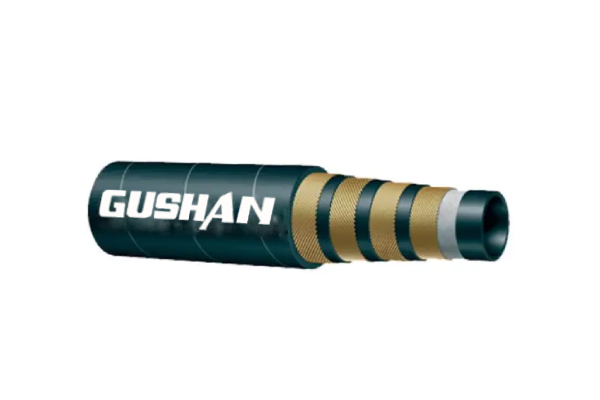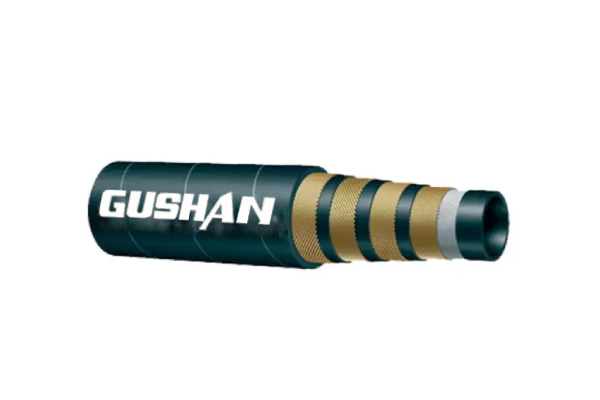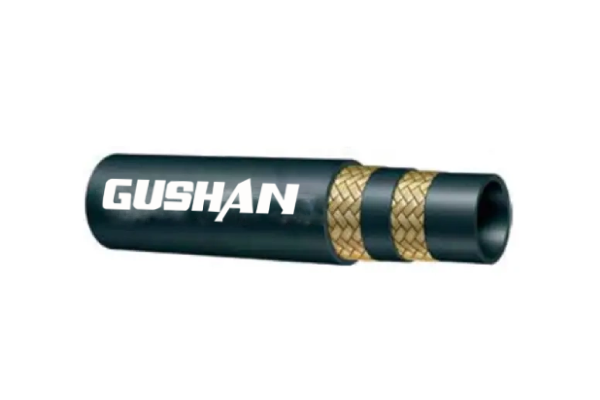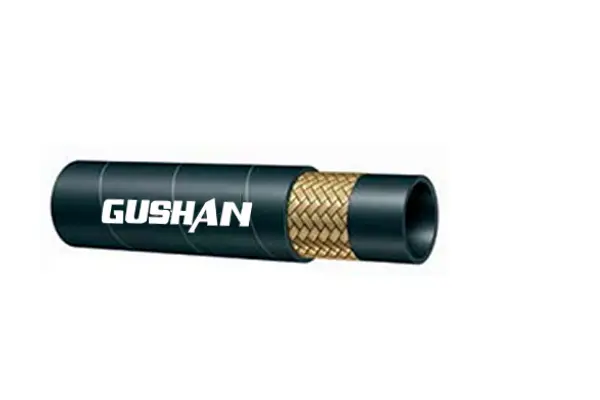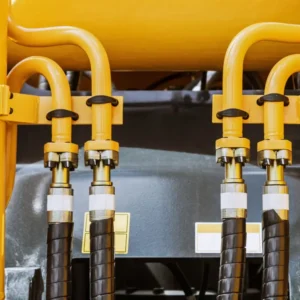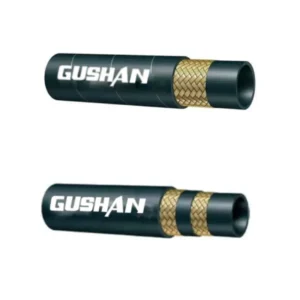Hydraulic hoses are critical components in various industrial applications. Selecting the correct hose dimensions is essential to ensure optimal performance, safety, and longevity of your hydraulic system.
In this guide, we will delve into the key factors to consider when choosing hydraulic hose dimensions and provide valuable insights to help you make informed decisions.
What Are Hydraulic Hose Dimensions
Hydraulic hose dimensions are crucial factors in ensuring the optimal performance and safety of hydraulic systems.
Correctly selecting hydraulic hose size, material, and fittings is essential to prevent failures and maintain system efficiency.
Hydraulic Hose Dimensions in mm
Here are some common hydraulic hose dimensions in millimeters:
| Inside Diameter (ID) mm | Outside Diameter (OD) mm |
|---|---|
| 4.8 | 13.5 |
| 6.4 | 16.7 |
| 7.9 | 18.3 |
| 9.5 | 20.6 |
| 12.7 | 25.4 |
| 15.9 | 31.8 |
| 19.1 | 38.1 |
| 25.4 | 44.5 |
Note: These are just a few common sizes, and the actual dimensions can vary depending on the specific hose type, manufacturer, and application.
It’s important to consult the manufacturer‘s specifications or a hydraulic hose specialist to ensure the correct size for your specific application.
Factors to Consider When Selecting Hose Size:
- Working Pressure: The maximum pressure the hose will be subjected to.
- Flow Rate: The required flow rate of the hydraulic fluid.
- Temperature Range: The operating temperature range of the fluid.
- Fluid Compatibility: The type of fluid being used.
- Bending Radius: The minimum radius to which the hose can be bent without damage.
- Installation Environment: The physical conditions, such as exposure to chemicals, abrasion, or vibration.
By carefully considering these factors and consulting with experts, you can select the appropriate hydraulic hose size to ensure optimal performance and safety in your hydraulic system.
Hydraulic Hose Dimensions in Inches
Here are some common hydraulic hose dimensions in inches:
| Dash Size | Inside Diameter (in) | Outside Diameter (in) |
|---|---|---|
| -2 | 1/8 | 3/16 |
| -3 | 3/16 | 1/4 |
| -4 | 1/4 | 5/16 |
| -6 | 3/8 | 3/8 |
| -8 | 1/2 | 1/2 |
| -10 | 5/8 | 5/8 |
| -12 | 3/4 | 3/4 |
| -16 | 1 | 1 |
Note: These are just a few common sizes, and the actual dimensions can vary depending on the specific hose type, manufacturer, and application.
It’s important to consult the manufacturer‘s specifications or a hydraulic hose specialist to ensure the correct size for your specific application.
Remember: Incorrect hose sizing can lead to performance issues, safety hazards, and reduced system lifespan.
Key Hydraulic Hose Dimensions
When selecting a hydraulic hose, several key dimensions (include hydraulic hose diameters) must be considered to ensure optimal performance and safety:
Inside Diameter (ID):
- Determines the flow rate of hydraulic fluid.
- A larger ID allows for higher flow rates, while a smaller ID is suitable for lower-pressure applications.
Outside Diameter (OD):
- Influences the hose’s strength, flexibility, and compatibility with fittings.
- A larger OD generally indicates a higher pressure rating and greater durability.
Wall Thickness:
- Determines the hose’s pressure rating and resistance to wear and tear.
- A thicker wall thickness is required for higher-pressure applications.
- The minimum radius to which the hose can be bent without damage.
- Exceeding the bend radius can weaken the hose and lead to premature failure.
Length:
- The required length of the hose, considering the specific application and installation requirements.
By carefully considering these dimensions and consulting with a hydraulic hose specialist, you can select the appropriate hose for your specific application.
Remember: Incorrect hose sizing can lead to reduced performance, increased energy consumption, and potential safety hazards. Always refer to the manufacturer‘s specifications and industry standards when selecting hydraulic hoses.
Common Hydraulic Hose Dimensions
Here are some common hydraulic hose dimensions in both inches and millimeters:
3/8″ Hydraulic Hose Dimensions
- Inside Diameter (ID): 3/8″ (approximately 9.5 mm)
- Outside Diameter (OD): Varies depending on the hose type and wall thickness, but typically around 11/16″ (approximately 17.5 mm)
1/2″ Hydraulic Hose Dimensions
- Inside Diameter (ID): 1/2″ (approximately 12.7 mm)
- Outside Diameter (OD): Varies, but typically around 5/8″ (approximately 15.9 mm)
3/4″ Hydraulic Hose Dimensions
- Inside Diameter (ID): 3/4 inch (approximately 19.05 mm)
- Outside Diameter (OD): Approximately 1 1/32 inch (approximately 31.75 mm)
1″ Hydraulic Hose Dimensions
- Inside Diameter (ID): 1″ (approximately 25.4 mm)
- Outside Diameter (OD): Varies, but typically around 1 1/4″ (approximately 31.8 mm)
5/8″ Hydraulic Hose Dimensions
- Inside Diameter (ID): 5/8″ (approximately 15.9 mm)
- Outside Diameter (OD): Varies, but typically around 7/8″ (approximately 22.2 mm)
Note: These are common dimensions, and actual sizes may vary depending on the specific hose type, manufacturer, and pressure rating. It’s crucial to consult the manufacturer‘s specifications or a hydraulic hose specialist to ensure the correct size for your application.
Key Factors Affecting Hose Dimensions:
- Working Pressure: The maximum pressure the hose will be subjected to.
- Temperature Range: The operating temperature range of the fluid.
- Fluid Compatibility: The type of fluid being used.
- Bending Radius: The minimum radius to which the hose can be bent without damage.
- Installation Environment: The physical conditions, such as exposure to chemicals, abrasion, or vibration.
By carefully considering these factors, you can select the appropriate hydraulic hose dimensions to ensure optimal performance and safety in your hydraulic system.
How to Choose the Right Diameter of Hydraulic Hose: ID & OD
The correct selection of hydraulic hose diameter is crucial for the optimal performance and safety of your hydraulic system. The two primary dimensions to consider are the inside diameter (ID) and the outside diameter (OD).
Inside Diameter (ID)
The inside diameter determines the flow rate of hydraulic fluid. A larger ID allows for higher flow rates, while a smaller ID is suitable for lower-pressure applications.
Factors Affecting ID Selection:
- Flow Rate: The required flow rate of the hydraulic fluid.
- Pressure Drop: The desired pressure drop across the hose.
- Fluid Viscosity: The viscosity of the hydraulic fluid can influence the flow rate.
Outside Diameter (OD)
The outside diameter of the hose influences its strength, flexibility, and compatibility with fittings. A larger OD generally indicates a higher pressure rating and greater durability.
Factors Affecting OD Selection:
- Pressure Rating: The maximum pressure the hose can withstand.
- Bending Radius: The minimum radius to which the hose can be bent without damage.
- Weight and Size Constraints: The physical limitations of the installation space.
Tips for Selecting the Right Hose Diameter:
- Consult the Manufacturer‘s Specifications: Refer to the manufacturer‘s data sheets for specific recommendations based on your application requirements.
- Consider Future Needs: Allow for potential future increases in system pressure or flow rate.
- Consult with a Hydraulic Specialist: A hydraulic specialist can provide expert advice on hose selection and sizing.
- Avoid Oversizing or Undersizing: Both can lead to performance issues and potential safety hazards.
By carefully considering these factors and consulting with experts, you can select the appropriate hydraulic hose diameter to ensure optimal performance and safety in your hydraulic system.
How to Measure the Diameter of a Hydraulic Hose
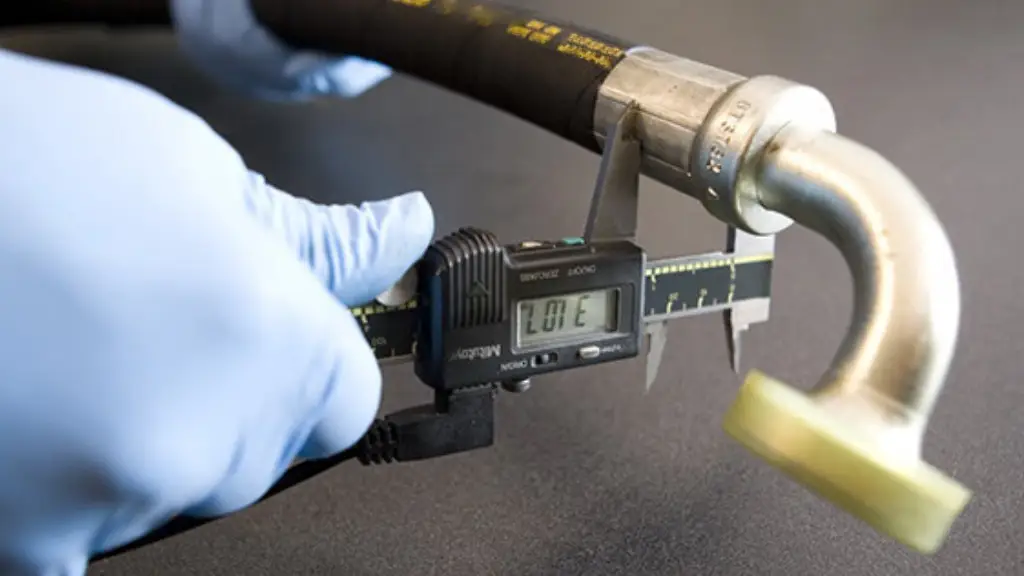
Measuring the Diameter of a Hydraulic Hose
To accurately measure the diameter of a hydraulic hose, you will need a few tools:
- Vernier Caliper: This precision measuring tool is ideal for measuring the outside diameter (OD) of the hose.
- Micrometer: For more precise measurements, especially for smaller hose sizes, a micrometer can be used.
Steps to Measure the Diameter:
- Clean the Hose: Ensure the hose surface is clean and free of dirt or debris.
- Measure the Outside Diameter (OD):
- Using a Vernier Caliper: Place the jaws of the caliper around the hose and tighten the screw. Read the measurement from the caliper’s scale.
- Using a Micrometer: Place the hose between the anvil and spindle of the micrometer, and tighten the thimble. Read the measurement from the micrometer’s scale.
- Calculate the Inside Diameter (ID):
- If you need to determine the inside diameter, you can use a formula or consult a hose manufacturer‘s catalog. The formula typically involves subtracting twice the wall thickness from the outside diameter.
Tips for Accurate Measurement:
- Ensure Proper Alignment: Make sure the caliper or micrometer jaws are aligned perpendicular to the hose to get an accurate reading.
- Multiple Measurements: Take multiple measurements at different points along the hose to ensure accuracy.
- Consider Hose Compression: Be aware that the hose may compress slightly under the pressure of the measuring tool.
- Consult Manufacturer‘s Specifications: If you have doubts about the measurements, refer to the manufacturer‘s specifications for the specific hose type.
By following these steps and using the appropriate tools, you can accurately measure the diameter of a hydraulic hose and select the correct replacement hose or fitting.
Conclusion
By carefully considering the various factors that influence hydraulic hose dimensions, you can ensure optimal performance, safety, and longevity of your hydraulic system. Always consult with a hydraulic hose specialist to select the appropriate hose size and type for your specific application.
Ready to upgrade your hydraulic systems with high-quality hoses?
Contact us today to explore our wide range of hydraulic hoses and fittings. Our expert team can help you select the right products for your specific application and provide expert advice on installation and maintenance.

